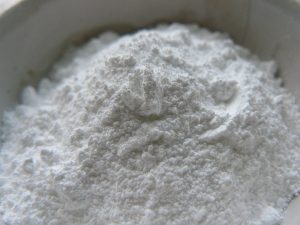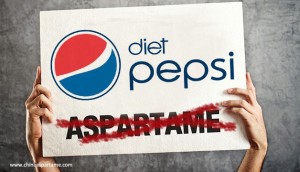What is Sodium benzoate E211?
Sodium benzoate E211 is used as food preservative with an E number of E211. Sodium Benzoate E211 is a food grade preservative generally regarded as safe (GRAS) worldwide. It is the sodium salt of benzoic acid E210 and synthesized by reacting sodium hydroxide with benzoic acid. Sodium benzoate E211 has effective antimicrobial action against yeasts, molds, food poisoning bacteria and spore-forming bacteria. It is not effective against food spoilage bacteria like clostridia or lactic acid bacteria.
Sodium benzoate common name: E211, sodium salt of benzoic acid, benzoate of soda, food preservative 211, class 2 preservatives ins 211, e 211 preservative, ins 211 preservative.
Sodium benzoate ph range
Sodium benzoate E211 is not recommended as a food preservative at pH ranges higher than 4.5. The best PH value is 2.5 ~ 4.0. The effectiveness of sodium benzoate E211 as a preservative increases with decreasing pH (increasing acidity). This is because the ratio of undissociated benzoic acid to ionized benzoic acid increases as the pH decreases.
Sodium benzoate concentration
Sodium benzoate E211 & Potassium sorbate E202 is normally used in concentrations of 0.5 – 1.5 %. Sodium benzoate E211 has been generally reported to be used at concentrations below 3%.
What is Sodium benzoate made of
Sodium benzoate E211 is made of by chemical synthesis, and the manufacturing process is through Benzoic acid E210 and sodium bicarbonate reaction.
Mechanism of preservative action of benzoates
Mechanism of preservative action of benzoates or sodium benzoate mechanism of action depends on the undissociated molecules, the lipophilic of not dissociable Benzoic acid E210 is strong, and easy to pass through the cell membrane, then enter into the cell, interfering with the mold and bacteria and other microbial cell membrane permeability, hindering the absorption of cell membrane against amino acids. Benzoates which access to intracellular cell, can acid intracellular storage and inhibit the activity of respiratory enzymes in microbial cells, which play a preservative effect.
Benzoates are broad-spectrum antimicrobial agent that works well against yeasts, molds, and some bacteria, and inhibits various bacteria at pH 4 – 5 below the maximum allowable range of use.
History of Sodium benzoate E211
The history of Sodium benzoate E211 begins discovered by the U.S. Food and Drug Administration (FDA) in the 1990’s. Sodium Benzoate was manufactured by adding sodium hydroxide or sodium bicarbonate to benzoic acid. The FDA discovered sodium benzoate can react with ascorbic acid (vitamin C) to form the carcinogen benzene.
Source: https://prezi.com/x22qafi3–zn/sodium-benzoate/
Sodium benzoate physical properties
Sodium benzoate E211 is a white granular or crystalline powder that is odorless or slightly hypoallergenic with a slightly sweet, astringent taste. sodium benzoate molecular weight is 144.12. It is stable in the air, soluble in water, the pH of its aqueous solution is 8, soluble in ethanol. Benzoic acid E210 and its salts are broad-spectrum antimicrobial agents, but their antibacterial effectiveness depends on the pH of the food. With the increase of medium acidity, the bactericidal effect will be enhanced, but bactericidal and antibacterial effects will be lost in alkaline medium. The best PH value is 2.5 ~ 4.0 for preservative effect.
Molar mass of sodium benzoate:144.10 g·mol−1
Sodium benzoate melting point:410 °C (770 °F; 683 K)
Sodium benzoate density:1.497 g/cm3
This data shows in Wikipedia, but as you know sodium benzoate has two food grade: sodium benzoate powder and sodium benzoate granular, so the density is different.
Sodium benzoate pka: The pKa of benzoic acid is 4.2.
Sodium benzoate chemical structure
Sodium benzoate chemical formula: C7H5NaO2
Sodium benzoate cas no: 532-32-1
Sodium benzoate boiling point: not available
Sodium benzoate stability: it is stable Stored in cool, dry and ventilated place.
Sodium benzoate MSDS: https://www.foodsweeteners.com/sodium-benzoate-msds/
Sodium benzoate solubility in water:
62.69 g/100 mL (0 °C)
62.78 g/100 mL (15 °C)
62.87 g/100 mL (30 °C)
71.11 g/100 mL (100 °C)
Sodium benzoate Use & Application
What is sodium benzoate used for in food?
Sodium benzoate E211 is bacteriostatic and fungistatic under acidic conditions. It is widely used as safe preservative in acidic foods such as salad dressings (vinegar), carbonated drinks (carbonic acid), jams and fruit juices (citric acid), pickles (vinegar), and condiments.
Sodium benzoate E211 and Benzoic acid E210 are widely used as preservative in the preservation of foodstuffs, but are used in limited quantities in some food and in some countries. Benzoic acid and Sodium benzoate is generally used in acidic PH products like carbonated drinks, soy sauce, sauces, preserves and fruit and vegetable drinks, etc. Benzoic acid and Sodium benzoate can be used synergistically with paraben in soy sauce and beverages. Benzoic acid and sodium benzoate commonly used in the preservation of acidic pH fruit, jam, beverage syrup memory of other acidic foods, can be combined with low temperature sterilization, play a synergistic role.
Benzoic acid E210 and Sodium benzoate E211 are widely used as preservatives in the preservation of foodstuffs, but are used in limited quantities in some foods in some countries. Sodium benzoate E211 is not recommended as a food preservative at pH ranges higher than 4.5. The best PH value is 2.5 ~ 4.0. So the effect is better in strong acid foods. sodium benzoate is generally used in carbonated drinks, soy sauce, sauces, preserves and fruit and vegetable drinks, etc.
Ascorbic acid and Sodium benzoate: In combination with ascorbic acid (vitamin C, E300), sodium benzoate and potassium benzoate may form benzene, a known carcinogen. When tested by the FDA, most beverages that contained both ascorbic acid and benzoate had benzene levels that were below those considered dangerous for consumption by the World Health Organization (5 ppb)
Source: https://en.wikipedia.org/wiki/Sodium_benzoate
Coca cola sodium benzoate: Coca-Cola announced that it would be phasing out sodium benzoate from many of its drinks, but not Fanta and Sprite.
Source: https://en.wikipedia.org/wiki/Benzene_in_soft_drinks
What Foods Contain sodium benzoate?
Benzoic acid and sodium benzoate commonly used in the preservation of high acid fruit, soda, soft drinks, soy milk, jam, pickles, toothpaste, mouthwash, cough syrup, fish products, skin care, hair products, shampoo. Benzoic acid and sodium benzoate can be combined to use in low temperature sterilization, play a synergistic role.
How much sodium benzoate to use as preservative
In Beverage
Sodium benzoate is the standard food preservative used in carbonated beverages. The concentration is around 0.03% to 0.08 % is used for the finished products. Non-carbonated beverages normally require somewhat higher concentrations of 0.05% to 0.1 % sodium benzoate in the finished products.
In Cider
Concentrations of sodium benzoate as low as 0.04 %.
Margarine
sodium benzoate is allowed as a preservative up to 0.1 %.
In Syrups
Sodium benzoate may be used to inhibit microbial growth in these syrups at levels of about 0.1 % at pH values below 4.5. In chocolate syrups and other fountain syrups with pH values above 4.5, sodium benzoate may be used in conjunction with other preservatives that are more effective in that pH range.
How much sodium benzoate to use in juice: sodium benzoate will be used at levels of 0.05% to 0.1 % to preserve these products.
Applications
Sodium benzoate in Soda & Drinks
As Sodium Benzoate can react with Vitamin C, some soda drinks do not use Sodium Benzoate. For example, Diet Coke made by Coca-Cola does not contain sodium benzoate, a change that was made in 2008. Coca-Cola’s other drinks, including Fanta and Sprite, continue to use sodium benzoate E211 in production. The company states that alternatives to E211 impact preservation and change the taste of the product. Pepsi Max, as well as the diet versions of Mountain Dew, Sunkist Orange, Nestea and Nordic Mist, also continue to use the preservative throughout the world.
Sodium benzoate in Fish
According to the United States FAO regulations, benzoic acid and sodium benzoate can be used for frozen fish sticks, fish pieces, fish filling products, but did not put meat products included in the scope of use.
Sodium benzoate uses for skin care
Sodium benzoate is very common skin care products, food and supplement preservative used to protect acidic environments from spoiling.
Sodium benzoate in toothpaste
In order to ensure quality, inhibit microbial breeding and propagation to prevent excessive bacteria, usually a preservative is added in toothpaste.
Sodium benzoate pharmaceutical use
Sodium benzoate is an antimicrobial preservative and flavoring agent used in the pharmaceutical industry.
Sodium benzoate Function
Its usage level in most kinds of food is 0.05–-0.1%. Sodium benzoate is used in acidified foods, such as carbonated beverages, fruit juices, cider, pickles, and sauerkraut.
Sodium benzoate is low in cost.
Sodium chloride has a considerable synergistic effect with sodium benzoate.
When used in oil-in-water emulsions, like mayonnaise, sodium benzoate is used in combination with potassium sorbate. This mixture has a stronger effect against acid-producing bacteria than either of the two preservatives individually.
Benzoic acid is ineffective against oxidation and enzymatic spoilage. When used in fruit products, sodium benzoate is usually combined with small quantities of sulfur dioxide or other antioxidants.
Sodium benzoate benefits
The benefit of Sodium benzoate is to extend food shelf life. Sodium benzoate has effective antimicrobial action against yeasts, molds, food poisoning bacteria and spore-forming bacteria. It is not effective against food spoilage bacteria like clostridia or lactic acid bacteria.
Sodium Benzoate is a sodium salt of benzoic acid, which is naturally occurring in apples, cranberries, plums, ripe cloves, and cinnamon in low levels, and is often produced synthetically by reacting Benzoic Acid with Sodium Hydroxide (NaOH). Sodium Benzoate (NaC7H5O2) is used as a food, medicine, and cosmetic preservative as a bacteriostatic and fungistatic, both of which reduce or limit the growth or bacteria or fungi by interacting with protein production, metabolism and DNA replication, without otherwise harming the bacteria or fungi. Its use is limited as a preservative by the FDA to 0.1% of a formula by weight. Sodium Benzoate is generally regarded as safe by the FDA, however, when combined with ingredients such as Vitamin C or E it can react to form benzene, a known carcinogen.
Preservatives are added to cosmetics, personal care products, and food to maintain a products integrity and stability by inhibiting or reducing the growth of microorganisms such as bacteria and fungus (FDA). Most products sold via retail sit for extended periods of time during shipping, in a warehouse, and on store shelfs that allow enough time for a product to spoil or cause microbial growth which render the product unfit for use.
Sodium benzoate Safety
FDA regulation
Sodium benzoate is GRAS. It is to be used up to 0.1% in food, as regulated by the FDA in articles 21CFR184.1733 and 21CFR582.3733 in the Code of Federal Regulations.1,4 The safety of sodium benzoate at levels higher than 0.1% is unknown, because it reacts with ascorbic acid (vitamin C) with light and heat and creates benzene, the maximum allowable level of which is 5 ppb.
Safety
Sodium benzoate is less acutely toxic and has an animal maximum lethal dose (MNL) of 500 mg / kg body weight. But in the human in intestinal acid environment can be converted to more toxic benzoic acid. Ingestion of benzoic acid and its sodium in mice can result in weight loss, diarrhea, initial blood loss, paralysis and even death. Benzoic acid toxicity by changing the permeability of the cell membrane, inhibit the absorption of amino acids on the cell membrane, and inhibit the activity of enzymes such as lipase through the cell membrane, ATP synthesis is blocked.
Benzoic acid is not chronically toxic. Rats were fed benzoic acid for 8 weeks, the results showed no abnormal changes in mouse offspring growth, reproduction and morphology. Other experiments also show that benzoic acid is non-accumulating, teratogenic, carcinogenic and mutagenic and antigenic.
Benzoic acid degrades rapidly in animals. Benzoic acid (99%) binds primarily to glycine to form hippuric acid.
Sodium benzoate Side effect
While Sodium benzoate is generally recognized as safe in small doses, Sodium benzoate may cause harmful health effects under certain conditions.
It is probably safe, right? After all, the US Food and Drug Administration (FDA) and the Canadian Health Protection Branch have pronounced this chemical preservative to be acceptable when consumed in low amounts.
The most concerned side effects are carcinogenic. A more common problem, however, is the combination of sodium benzoate and citric acid and/or ascorbic acid (vitamin C). When these ingredients get together, they form benzene, a cancer-causing chemical associated with leukemia and other blood cancers.
For example, a small percentage of people are hypersensitive to sodium benzoate and can experience asthmatic attacks, hives, or other allergic reactions when they consume the preservative.
Is sodium benzoate bad?
Sodium Benzoate was found to be present in 34% of 204 tested products (92 shampoos, 61 conditioners, 34 liquid soaps, and 17 wet tissues) (Yazar et al. 2010). Though the FDA limits the use of sodium benzoate to 0.1% by weight in food, it is limited to 2.5% in rinse off products and 0.5% in leave on products by the European Union Cosmetic Directive (Yazar et al. 2010). Though Sodium Benzoate is generally considered safe, it can become a serious hazard if it is combined with Vitamin C (ascorbic acid) or Vitamin E (tocopherols) as they react to form benzene (C6H6), a cancer causing hydrocarbon. The amount of benzene produced from these reactions was determined to be below dangerous levels (5 parts per billion) for consumption by the World Health Organization, based on presence of benzene in soft drinks. Benzene is classified as an A1 carcinogen (confirmed for humans) by the American Conference of Governmental Industrial Hygienists (ACGIH) and Group 1 carcinogen by the International Agency for Research on Cancer (IARC). Benzene is also a possible mutagen and developmental toxin in humans that is specifically toxic to blood, bone marrow, and the central nervous system, and may target the liver and urinary system. Limited studies show that after dermal (skin) exposure, benzene was metabolized by the liver and excreted. There is no available research on the formation and concentration of benzene in cosmetic products at this time, so it is best to avoid products containing sodium benzoate in conjunction with ascorbic acid (Vitamin A) or tocopherol (Vitamin E).
Is Sodium benzoate safe to pregnancy?
Animal studies revealed prenatal exposure of offspring to sodium benzoate produced lesions in layer 5 cortical pyramidal cells. However, specific animal reproduction and fertility impairment studies have not been conducted. US FDA pregnancy category C: Animal reproduction studies have shown an adverse effect on the fetus and there are no adequate and well-controlled studies in humans, but potential benefits may warrant use of the sodium benzoate in pregnant women despite potential risks.
sodium benzoate should be used by pregnant women only if clearly needed. US FDA pregnancy category: C Comments: It is unknown whether this drug can cause fetal harm or can affect reproduction capacity.
Source: https://www.drugs.com/pregnancy/sodium-benzoate-sodium-phenylacetate.html
Is Sodium benzoate safe to children?
Another consideration is a possible link between sodium benzoate and ADHD (attention deficit/hyperactivity disorder). The Mayo Clinic notes that the preservative (as well as several food dyes) may enhance or trigger hyperactivity in children.
Is Sodium benzoate safe in skin care?
Sodium Benzoate is a salt of Benzoic Acid and used as a preservative in cosmetics and personal care product formulas as a fragrance ingredient, masking ingredient, anti-corrosive agent, and most frequently, as a preservative.
It is FDA approved and has received the GRAS (Generally Recognized as Safe) rating, and the CIR found that doses used in cosmetics and personal care products were not high enough to cause potential reproductive and developmental effects.
The Cosmetics Database still found concerns regarding cancer, developmental and reproductive toxicity, organ system toxicity, irritation and biochemical cellular changes with Sodium Benzoate as an ingredient in cosmetics and personal care products. One or more animal studies showed brain and nervous system effects at moderate doses, broad systemic effects at low doses, and in vitro tests on mammalian cells showed positive mutation results. One or more animal studies showed biochemical changes at high doses where the human health implications are not yet well understood, and animal studies showed skin irritation at high doses as well.
https://www.truthinaging.com/ingredients/sodium-benzoate
Commonly reported side effects of Sodium benzoate
Include: infection, respiratory tract disease, central nervous system disease, disorder of lymphatic system, hematologic disease, nutrition disorder, and vomiting. Other side effects include: cerebral edema, convulsions, metabolic acidosis, vascular disease, altered mental status, anemia, cardiac disorder, disorder of integument, fever, hyperammonemia, hyperglycemia, hypokalemia, hypotension, mental disorders, and renal disease. See below for a comprehensive list of adverse effects.
Source: https://www.drugs.com/sfx/sodium-benzoate-sodium-phenylacetate-side-effects.html
How to avoid Sodium Benzoate?
Sodium benzoate is also used to health and beauty products such as mouthwash, shampoo, body lotions, and deodorant to prevent bacteria from contaminating these items. Over-the-counter and prescription drugs such as pills, cough syrups, and topical medications also can contain sodium benzoate.
What you should do?
If you want to avoid sodium benzoate, read labels carefully. Look for the words “benzoic acid,” “benzene,” “sodium benzoate,” or “benzoate,” especially if you also see “citric acid,” “ascorbic acid,” or “vitamin C.” Sodium benzoate is also known as E211.
Sodium benzoate Market
Market Trend:
Comparison with Potassium sorbate, can be replaced by Potassium sorbate
When we compare the toxicity of benzoic acid and Sodium benzoate to Sorbic acid and Potassium sorbate from the LD, ADI of these food preservatives and the maximum usage amount and price. It can be seen, sorbic acid and potassium sorbate are less toxicity than benzoic acid. At the same time, the preservative effect of Sorbic acid and Potassium sorbate are better than sodium benzoate and benzoic acid, and they are more safe. The advantages of benzoic acid and sodium benzoate are relatively stable in the air and lower costs. However, sorbic acid and potassium sorbate are also very stable in the sealed condition. The thermal stability of potassium sorbate is better, decomposition temperature up to 270 ℃. A small amount of preservative is enough to added in food, so it will not significantly increase the cost of products. Therefore, many countries have begun to gradually use sorbic acid and potassium sorbate to replace benzoic acid and sodium benzoate.
In addition, the solubility of benzoic acid in acidic conditions is lower, if the stirring is not uniform, there will be some crystallization of benzoic acid, resulting in excessive benzoic acid in partial place. Benzoic acid is also antagonistic to calcium chloride and has similar effects as sodium chloride, isobutyric acid, gluconic acid, cysteine salts and others. The added benzoic acid can also make the food producing astringent taste, and even destroy the flavor of meat products. Therefore, the use of benzoic acid and sodium benzoate as preservatives in the processing of meat products is not recommended.
The use of natural preservatives, such as the use of Nisin, Natamycin, Chitosan, spices and other extracts, can also achieve the role of antimicrobial preservation. It is also possible to achieve the preservation of meat products by improving the processing conditions, improving the food packaging, sterilizing the products or sterilizing them by irradiation, storing at low temperature and the like. The most important thing is to strengthen health management and reduce pollution from the source.
China Export Sodium benzoate and Benzoic Acid
China manufacturers and suppliers export Sodium Benzoate, Benzoic Acid and the ester of Benzoate totally 73, 684, 453 KG (the quantity in 2016 is 73, 990, 571 KG) in 2017 and the amount reach to 99, 579, 313 USD. The amount in 2016 is 97, 801, 755USD.
We can see that the quantity is stable from 2016 to 2017 and we think the quantity will be also stable in 2018.
China main market and the export quantity as follows:
| Market | Approximate Quantity(KG) |
| US | 10,614,173 |
| Netherland | 5,502,207 |
| India | 4,803,653 |
| Mexico | 4,500,750 |
| Indonesia | 4,327,750 |
| Korea | 2,949,535 |
| Taiwan | 3,289,366 |
| Brazil | 3,619,550 |
| Japan | 1,286,189 |
| Russia | 2,175,625 |
| Thailand | 1,959,375 |
| Germany | 1,617,216 |
| Span | 925,790 |
| Itay | 587,370 |
| England | 1,079,260 |
| South Africa | 1,508,975 |
| Australia | 1,220,580 |
| Canada | 1,073,700 |
| Malysia | 1,028,367 |
| Vietnam | 1,117,565 |
Sodium benzoate halal: it is Halal, and we can offer food grade halal Sodium benzoate powder and food grade halal Sodium benzoate granular.
Sodium benzoate powder specification: https://www.foodsweeteners.com/wp-content/uploads/2018/03/Sodium-Benzoate-Powder-SPECIFICATION.pdf
Sodium benzoate granular/prill specification: https://www.foodsweeteners.com/wp-content/uploads/2018/03/Sodium-Benzoate-GranlarPrill-SPECIFICATION-.pdf
Sodium benzoate E211 manufacturers
China is the biggest Sodium benzoate E211 and Benzoic acid E210 manufacturers and export country in the world. The production capacity of Sodium benzoate E211 and Benzoic acid E210 in China reaches 73 thousand ton in 2017.
There are several Sodium benzoate E211 and Benzoic acid E210 manufacturers in China and abroad, as you know, the price of China Sodium benzoate E211 and Benzoic acid E210 suppliers can be better than abroad manufacturers. We have worked with China top Sodium benzoate E211 and Benzoic acid E210 manufacturer for years, we would like to recommend this Sodium benzoate E211 and Benzoic acid E210 brand to you if you would like to save your purchasing cost with the same Sodium benzoate E211 and Benzoic acid E210 quality compared with abroad Sodium benzoate E211 manufacturers. Sodium benzoate E211 and Benzoic acid E210 Samples are available if you need it for further test after accept the price.
Sodium benzoate E211 and Benzoic acid E210 price
There are main two types of Sodium benzoate E211 in the market: granular and power. Now the price of Sodium benzoate E211 is around USD/kg from China Sodium benzoate E211 manufacturers and suppliers.
Where to buy Sodium benzoate E211
All the products listed in our website are from the manufacturers we have worked together for many years. The professional working experience backup our confidence to their quality. We can supply Sodium benzoate E211 for many years and we can be your Sodium benzoate E211 suppliers in China. If you would like to buy Sodium benzoate E211 or inquiry price, please e-mail us through: info@foodsweeteners.com





